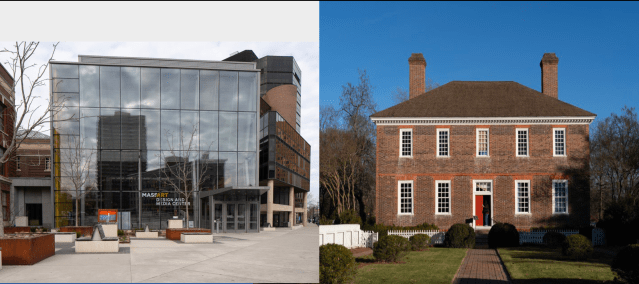
original images©Becky Chen
The pictures tell the story. And make the case. Biometric studies explain why. At left, is a photo of MassArt Design and Media Center, (c. 2016), a public college of applied art in downtown Boston; at right, the George Wythe House (c.1754), a historic site in Colonial Williamsburg, Virginia. Which building most readily grabs your eye?
Where do you think people will look ?
It you guessed the building at right, the Georgian brick one and not the all-glass facade, you’re right! Biometric studies, using software which predicts how people view a scene initially, in the first 3-to-5 seconds, before conscious viewing comes online, show why.
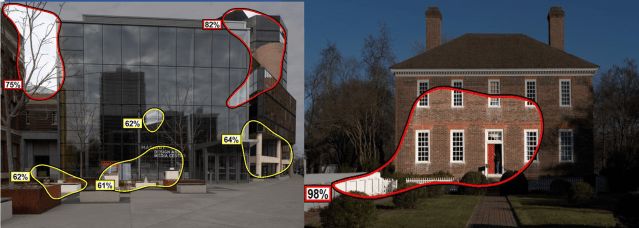
The VAS (Visual Attention Software) study creates region of interest (ROI) diagrams which reveal where viewers’ gaze likely goes, and indicate with red outlines that 75 to 82 percent of them take in the sky and areas around the glassy college building, rather than the structure itself! This is precisely opposite what happens with the old brick building, where 98 percent of views fall directly on the front facade and adjacent fence!
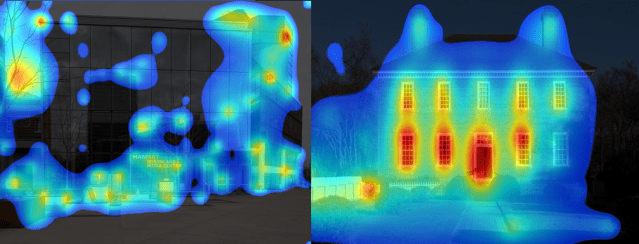 The study’s heat maps above, aggregating predicted viewing data in color, glow reddest where people look most, and fade to dark grey and black in areas ignored, again showing how the brain directs views away from most of the glass building, and does the opposite with the brick one. Note how none of the historic house shows up black, and its door and many of its windows glow red, suggesting they’ll implicitly draw the eye. Even the house chimneys appear bright blue, and will draw attention unconsciously in pre-attentive mode.
The study’s heat maps above, aggregating predicted viewing data in color, glow reddest where people look most, and fade to dark grey and black in areas ignored, again showing how the brain directs views away from most of the glass building, and does the opposite with the brick one. Note how none of the historic house shows up black, and its door and many of its windows glow red, suggesting they’ll implicitly draw the eye. Even the house chimneys appear bright blue, and will draw attention unconsciously in pre-attentive mode.
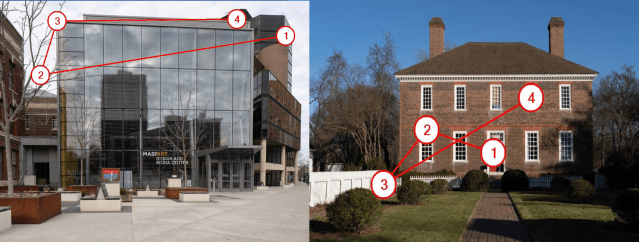
The study’s visual sequence diagrams, tracking the order the brain directs viewers to take in the scene initially, again indicate how, without conscious awareness or control, people focus around the edges of the glass building rather than at it. This indicates why approaching the building will be confusing, and finding the front door a challenge! With the Wythe House, on the other hand, the brain directs viewers to look right at the front door first! Amazing! That’s just what you’d want to see approaching a house or art school. And in the historic building, the brain keeps the eye focusing on the front facade, its architecture promoting a viewing pattern that’s more coherent, anticipating the viewer’s needs.
How can this be? “Facades impact architectural experience,” says Becky Chen, a student at the Boston Architectural College (BAC) who put together this study, and generously offered to share it with us here. “In my opinion, people don’t like looking at glass facades.” In this study, she used biometric software to reveal the hidden, pre-attentive traits that determine our architectural experience, showing how much pattern, color, areas of contrast, and different materials draw the eye instantly, which in turn directs our conscious behavior and experience of buildings.
So, what’s the issue with glass facades? The study suggests they lack the characteristics we evolved and still need to see, to secure us in a place, and ground us in space. We can’t focus or fixate on them; they don’t provide enough to look at. “Modern architecture can have the glass,” Becky Chen said. “But should have the elements of color and pattern to emphasize the space and attract people’s eyes.”
—————————————————————————
More posts on the Issue with Glass Facades:
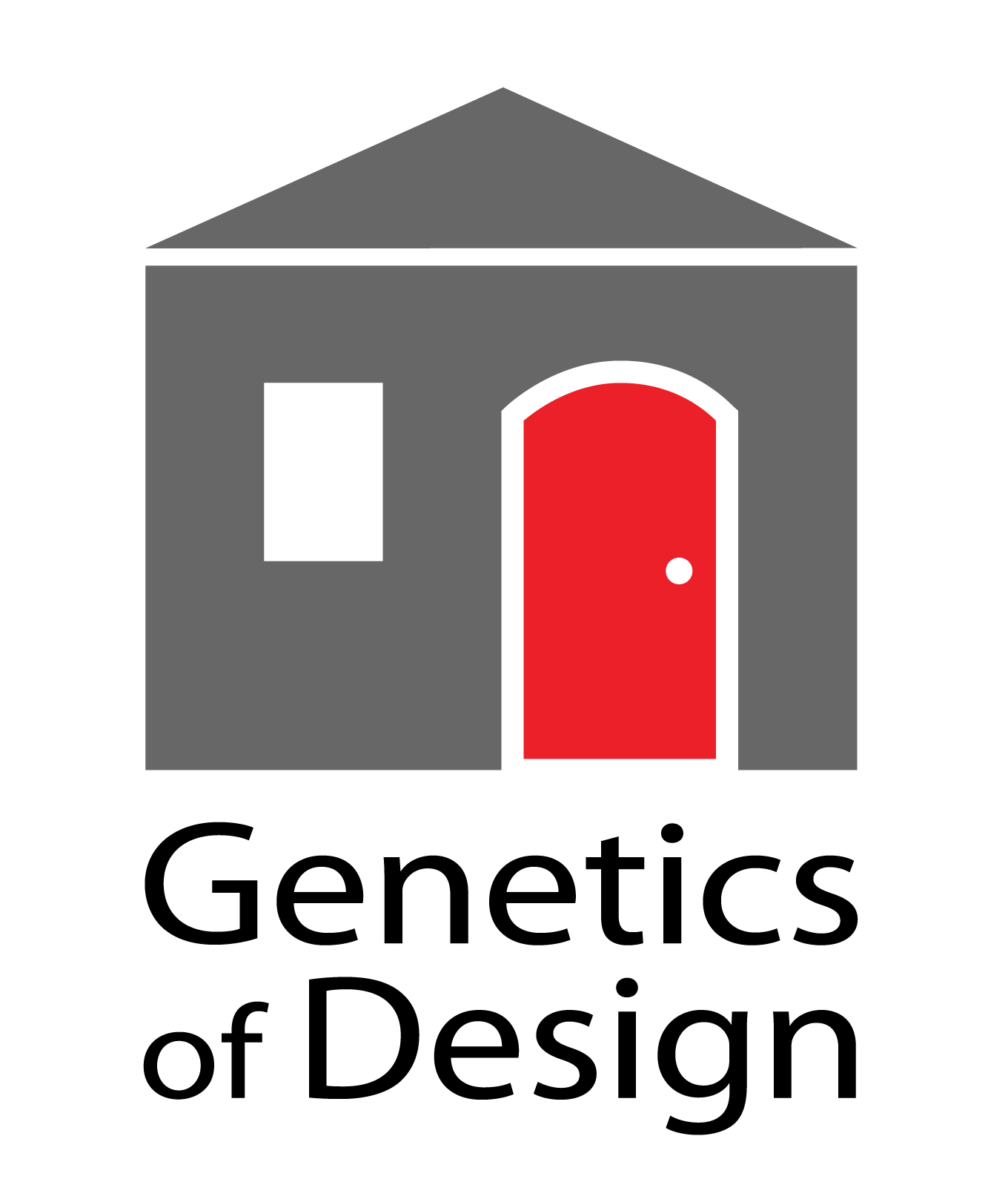
Pingback: Ux+Design/2023 – Call for Proposals: 2nd International Conference on Urban Experience and Design |
Pingback: Students Changing Design with Biometrics | The Genetics of Design
Pingback: Web Miscellany: Compilation #79 – existential ergonomics
I think this generalizes too much. I don’t spend focus time on an all-glass facade because my mind does not need to do so; it instantly “knows” what is there and can focus on the surrounding elements. Some glass facades appropriately highlight surrounding elements by disappearing the central structure. Some glass facades are just glass for its own trendy sake and likely to be out of place and “poor” architecture. That said, I may tend toward ASD or spectrum;-)
LikeLike
Pingback: All Glass Facades | Beauty, Neuroscience & Architecture
Pingback: Mirror Mirror On the Wall – Namrata Dewanjee